
A deck-building game for 2-4 players about growing an ancient civilization to greatness.
Setup
-
Each player takes a reference card. Give one person the first player token randomly.
-
Form a supply with the tokens:

-
Each player takes one tableau and places their Civilization Level marker on the zero.
-
Shuffle and deal one face down Monument to each player, who may examine it.
Example Monument:
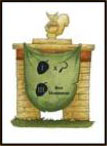
-
Each player takes 5 different
 cards. Shuffle the Civilization cards and deal 5 to each player. Shuffle these with your
cards. Shuffle the Civilization cards and deal 5 to each player. Shuffle these with your  cards to form your decks.
cards to form your decks. -
Place the remaining Civilization cards in a face down deck. Deal 3 cards face up in the middle of play to form the central trade row.
Example trade row:

-
Each player draws the first 5 cards of their personal deck. You are ready to begin.
Advanced: During setup, draft your initial cards. In addition to the
 cards, deal 5 Civilization cards to each player. Each player selects one and places it face down with their
cards, deal 5 Civilization cards to each player. Each player selects one and places it face down with their  cards. Then pass the remaining Civilization cards to the player on your left. This continues until all of the cards are selected.
cards. Then pass the remaining Civilization cards to the player on your left. This continues until all of the cards are selected.
Overview
SPQF requires you to build a deck with synergy to gather resources, expand your civilization, and score victory points. However, successful civilizations trade and have peaceful interactions with their neighbors.
In SPQF, this trading is represented by the term Following. As you can play cards during other players' turns to follow their actions, you'll want to also build your deck with your opponents' strategies in mind!
Game Play
The game is played in turns, beginning with the first player and proceeding clockwise around the table until the end of the game. Turns consist of a few phases in order: Action, Recruit, Discard, and Draw.
Each turn includes choosing one action card, modifying it with cards of the same type to enhance the action, then resolving it. Other players may play cards to follow this action to a lesser degree. Most actions fall within four categories:
- Gather resources
- Store items on your tableau
- Score VP
- Increase your Civilization Level
Action Phase
The action phase follows these steps:
- The active player plays one card from their hand, called the action card.
- The active player may play additional cards from their hand to modify the action card.
- Non-active players may follow in turn order.
- The active player resolves the action card.
- Following players resolve in turn order.
The active player places one card from their hand face-up in front of them to resolve its actions - this is the action card.
If the card has a cube cost
 in the top left corner, you must discard any cube before resolving any of the card's actions.
in the top left corner, you must discard any cube before resolving any of the card's actions.If a card has multiple actions, you may use them in any order. Each Action must be resolved fully before continuing to the next action.
Some cards allow you to play or resolve additional cards, but you must fully resolve the current action card before playing another.
If the active player does not have any cards with actions, or chooses not to play any, they may pass and continue to the Recruit phase.
All Civilization cards provide modifiers from one of six categories (or the wild oak leaf). After playing an action card, the active player may place any number of cards from their hand that match the action card's modifier in front of them.
 Action card modifiers |
The action card's modifier counts for itself so that every action has a default value of one. Cards played as action cards or for their modifiers are not in your hand. Finally, resolve the action on the card.
Each stored card (explained later) may also contribute its modifier to one of the active player's action cards each turn, as if played from their hand.
Some cards let you resolve trade row cards. When doing so, you may modify and follow the trade row card as if played from your hand.
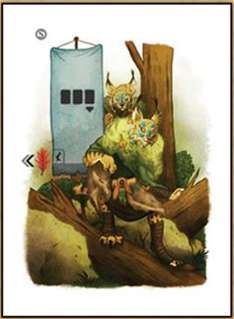 Trade row example |
Each card in the trade row can only be used once per player turn. After using a card in the trade row, it remains there.
Following
Non-active players may play one card from their hand with a modifier that matches that of the action card. They then resolve the followed action equal to the modifiers on their card, after the active player. You cannot follow with stored cards!

Actions with this symbol cannot be followed.
Non-active players must play a card for each action they wish to follow, and may follow multiple actions in a single player's turn.

For actions that gather green OR black cubes, following players must gather the color chosen by the active player.
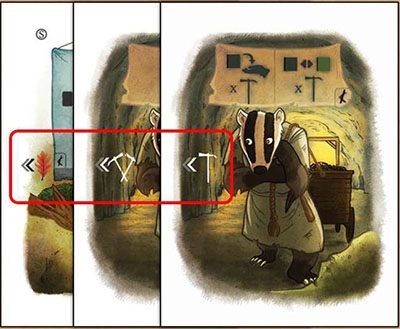
Example: The active player plays an industrial card to gather black cubes (left) and/or convert cubes they have to different colors (right). Four modifiers were played, so both actions can be performed four times!
Example: The three cards below could all be played to follow the left action of the above card. The right action cannot be followed.

Recruit Phase
The active player must recruit one card from any trade row, either an opponent's (if able) or the central one. Players can never recruit from their own trade row for any reason! Recruited cards are placed in your discard pile. Whenever a card is recruited from the central trade row, immediately draw a new card from the Civilization deck.
Designer Note: If you play a card as an action or to follow, you must use it for its intended action as much as you are able. You can always modify cards that have per actions as much as you wish, but never only binary actions (defined later).
The intent is for cards you do not play to enter your trade row. You cannot play a card that does not change the state of the game beyond moving the card into your discard pile.
While the notion of other players recruiting your cards may seem frustrating, it is a part of the game's economy and is not an afterthought.
Example: If you do not have resources in your personal supply, you cannot play a card that only allows you to store resources.
Discard Phase
The active player discards all cards in their trade row and all cards played as action cards or modifiers. Non-active players discard any cards played to follow
Then, the active player discards their starter cards ((§). Finally, all remaining cards in your hand are placed in your trade row. Opponents may recruit them until your next Discard phase.

Draw Phase
The active player draws five cards from their deck. If you are unable to draw a card because your deck is empty, shuffle your discard pile to form a new deck.
Non-active players who played cards to follow do not draw cards until the draw phase of their turn!
Civilization Level
There are 5 Civilization Levels earned by using the Expand action and spending resources indicated on the reference card. Levels must be earned in ascending order from 1 to 5. The first player to earn each level scores 1VP.
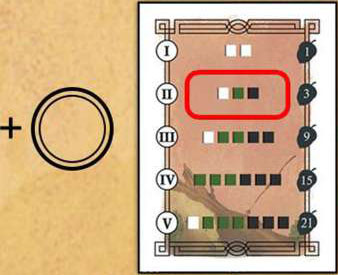 Expand icon and Civilization upgrade cost |
At level 0, players may store one resource and one card. Each level allows players to store one additional card and resource. Some actions provide benefits for storing cards and resources.

The first player who earns each Civilization Level earns 1VP. If multiple players are expanding, break ties in turn order beginning with the active player.
Action Clarifications
 Store Resource: Move the indicated resource from your personal supply to available space. You may spend stored resources for actions.
Store Resource: Move the indicated resource from your personal supply to available space. You may spend stored resources for actions.
 Store Card: Place a card from your hand under your tableau near this symbol. You can never replace or remove a stored card.
Store Card: Place a card from your hand under your tableau near this symbol. You can never replace or remove a stored card.

Resource: Cubes representing materials and crops. Trade Row: Cards that can be recruited in front of a player's tableau or from the central deck.

Gather: Take the indicated cubes from the central supply. You can never have more than four of each resource on your tableau in excess of your stored resources.

A Score: Take the indicated VP tokens from the supply.

Recruit: Take the indicated number of cards from any trade rows and place them in your discard pile.

Trash: Remove cards in your hand or discard pile from the game.
There are two kinds of actions in SPQF:
Per Action: An action that states you perform the action per the number of indicated modifiers played.

If you follow a per action with a card with two modifiers, you resolve it twice!

Binary Action: This is an action that cannot be modified and is resolved once only. These actions have the symbol shown on the right to indicate you use the action card's modifier to follow once.
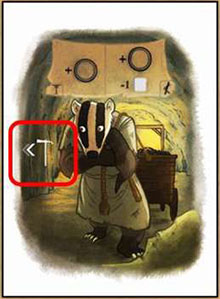
Even if you follow a binary action with a card with two modifiers, you still resolve it once only.
To follow the binary action on the right, play the industrial modifier.

Gather Actions (left to right):
- Gather one cube of the indicated color per modifier.
- Gather either color, not both, per indicated modifier. For ?, choose a modifier of your choice.
- Gather cubes identical to those you have stored.
- Gather cubes of your choice equal to the number of stored cards.

Store Actions (left to right):
- Store one card per indicated modifier.
- Store one cube per indicated modifier.
- Store one cube of your choice from the supply per indicated modifier.

Bonus Actions (left to right):
- Resolve a trade row card per arrow displayed.
- Play the shown number of extra action cards.
- Convert cubes to the other color per modifier.
- Follow any per action two times.

These are Trash and Recruit Actions (left to right):
- Recruit one card per indicated modifier. Gather one of the indicated cubes per recruited card.
- Trash one card per indicated modifier. Gather one of the indicated cubes per trashed card.
- Trash one card per indicated modifier. Score 1 VP per trashed card.

These are Expand Actions (left to right):
- Increase your Civilization Level once.
- Increase your Civilization Level once. Pay one fewer cube of your choice.
- Increase your Civilization Level once. t If you do, you score 2VP.

These are Score Actions (left to right):
- You may discard the indicated cubes per modifier to score 1 VP per discarded cube.
- Score 1VP per: stored cube/stored card/civilization level/indicated modifier played.
End of the Game
The end of the game begins when at least 1 of 3 occurs:
- One player has 25 or more VP tokens

- One player reaches the fifth Civilization Level

- The last card in the Civilization deck is placed in the central trade row.

When the end of the game initiates, finish the current round so that each player has an equal number of turns. Then, add up VP, with the highest score determining the winner.
If there is a tie, the player with the highest Civilization Level wins. If still tied, share the victory. Points are earned in a few ways:
VP tokens collected
Civilization Level (Ex: Level 3 awards 9VP)
Monuments: Score 1 VP per indicated modifier on cards in your deck (or stored). Don't count oak leaves!
The player who earned the most VP for their Monument scores a 3VP bonus. If players are tied, no bonus is awarded.
1 VP from each card with 1 VP in top right corner.
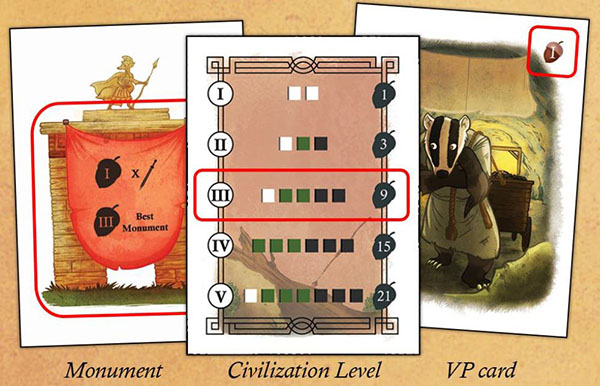
Continue Reading